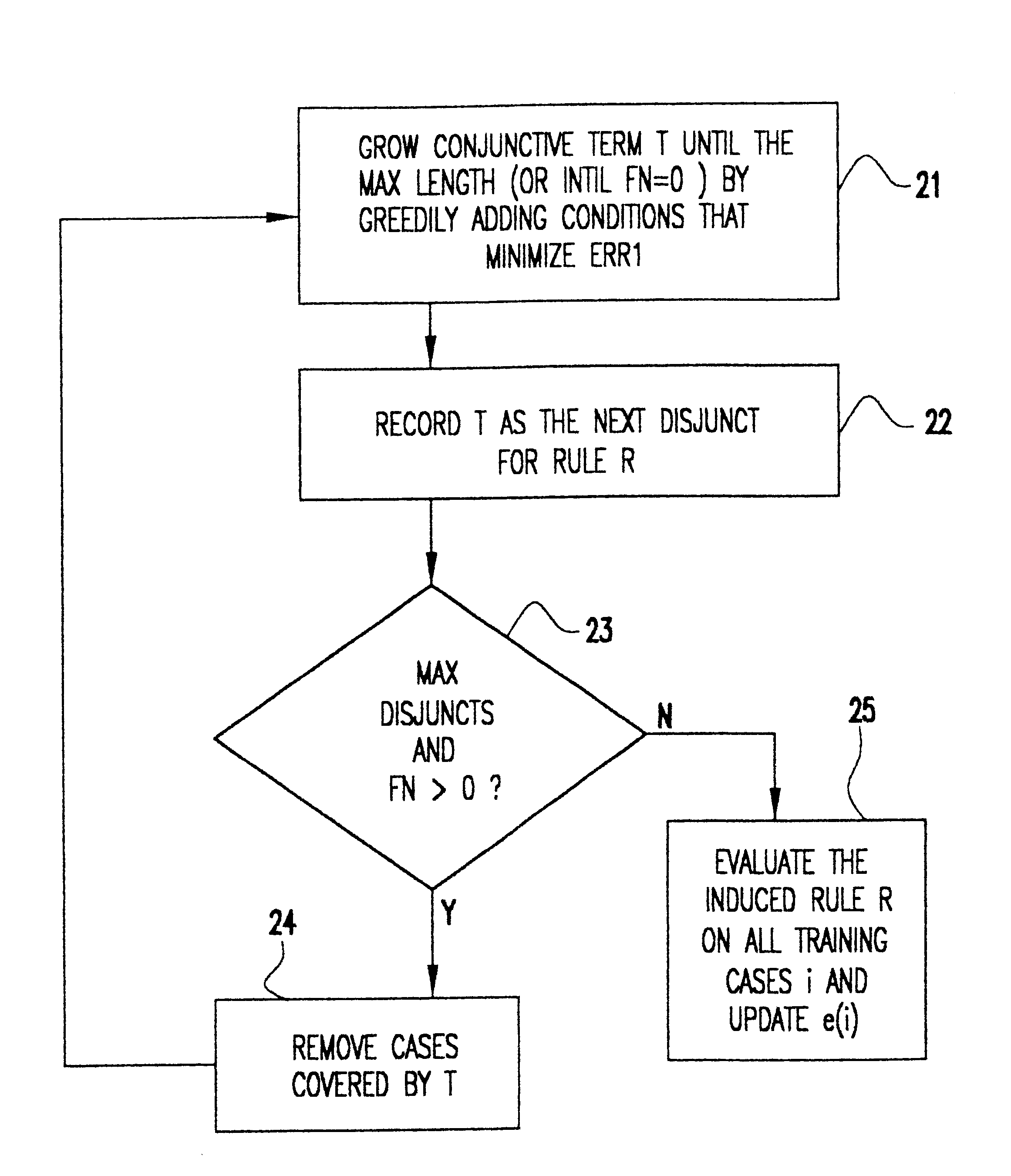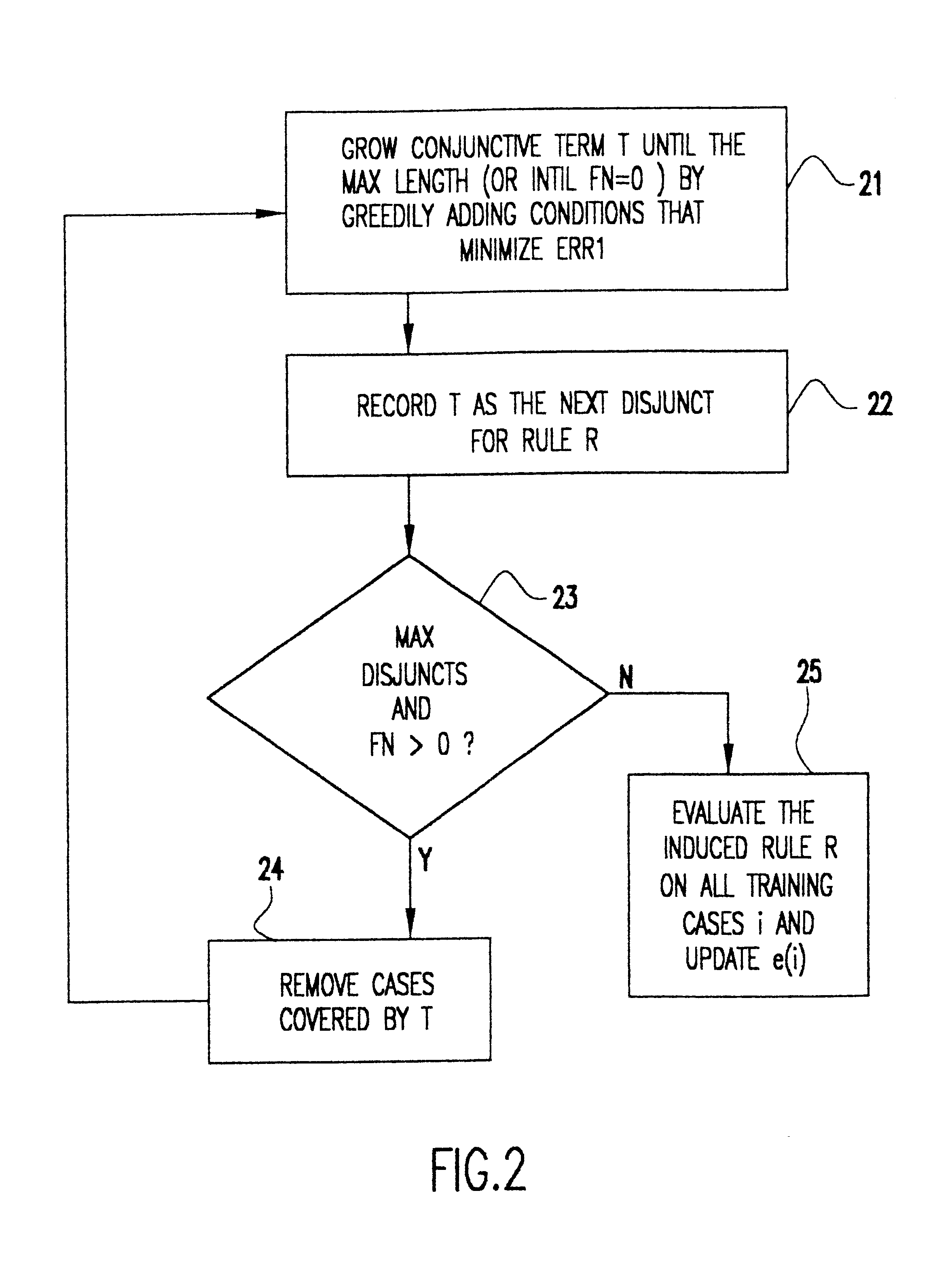Lightweight rule induction
a lightweight rule and induction technology, applied in the field of data mining decision rules, can solve the problems of high variance, single decision tree dramatically outperformed by voting methods for multiple decision trees, and difficulty in logic-based methods with applications with complex solutions
- Summary
- Abstract
- Description
- Claims
- Application Information
AI Technical Summary
Problems solved by technology
Method used
Image
Examples
Embodiment Construction
Referring now to the drawings, and more particularly to FIG. 1, the classical approach to rule induction, (see S. Weiss and N. Indurkhya, "Optimized Rule Induction," IEEE EXPERT, 8(6), pp. 61-69 (1993); and W. Cohen, "Fast Effective Rule Induction," The XII International Conference on Machine Learning, pp. 115-123 (1995)), is shown in a three-step process. The first step 11 is to find a single covering solution for all training examples. The covering rule set is found directly by inducing conjunctive rules or indirectly by inducing a decision tree. The direct solution usually involved inducing one rule at a time, removing the cases covered by the rule, and then repeating the process. The second step 12 is to prune the covering rule set or tree into smaller number of rules. The third step 13 is to pick the best minimum error, either by a statistical test or by applying the rule sets to independent test cases.
A pure DNF rule for classification is evaluated as satisfied or not. If sati...
PUM
 Login to View More
Login to View More Abstract
Description
Claims
Application Information
 Login to View More
Login to View More - R&D
- Intellectual Property
- Life Sciences
- Materials
- Tech Scout
- Unparalleled Data Quality
- Higher Quality Content
- 60% Fewer Hallucinations
Browse by: Latest US Patents, China's latest patents, Technical Efficacy Thesaurus, Application Domain, Technology Topic, Popular Technical Reports.
© 2025 PatSnap. All rights reserved.Legal|Privacy policy|Modern Slavery Act Transparency Statement|Sitemap|About US| Contact US: help@patsnap.com



